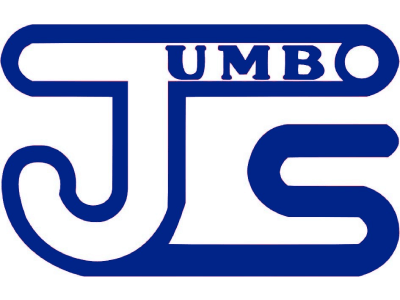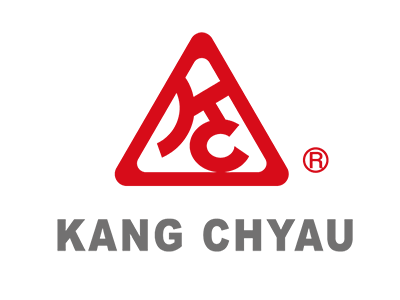Comparing Feeding Methods for Plastic Recycling Equipment: Which One Suits Your Needs?
In the realm of plastic recycling, the way materials are fed into recycling equipment plays a pivotal role in determining overall efficiency and output. Whether handling thin films, bulky plastic waste, or powders, selecting the appropriate feeding method is essential for optimizing machine performance and maintaining consistent production. This article delves into the primary feeding methods used in plastic recycling equipment, highlighting their unique features and ideal applications.
1. Cutter Compactor
The cutter compactor, also known as the agglomerator, is specifically designed to manage thin films and crushed bulky waste. By leveraging friction to generate heat, this method compresses lightweight, voluminous materials into denser, manageable blocks.
Key Advantages:
-
Compression and Feeding: Lightweight materials are transformed into dense blocks, boosting the overall output of recycling machines.
-
Moisture Removal: The compaction process preheats the materials, enabling moisture to evaporate and reducing the degassing workload on the extruder.
Best For: Thin films and crushed bulky waste. This method significantly enhances material preparation and overall recycling efficiency.
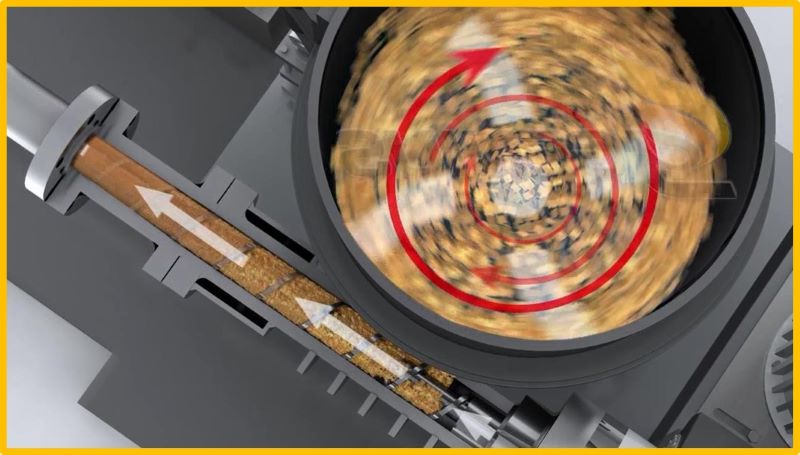
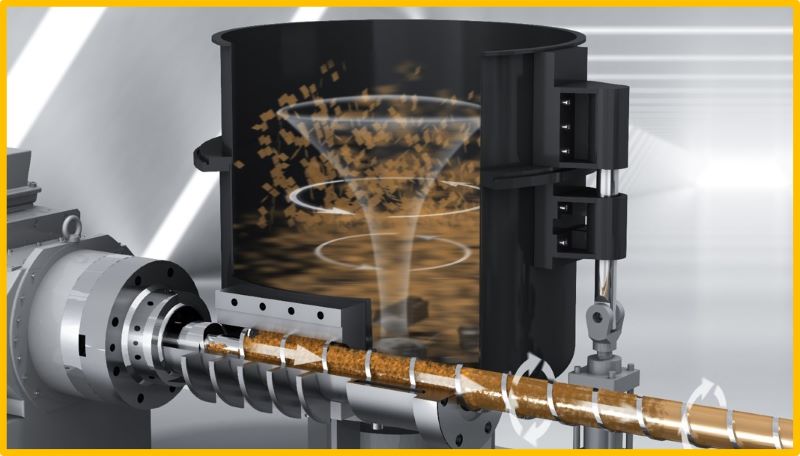
2. Forced Feeding
Ideal for clean, dry materials such as powders and crushed waste, forced feeding offers a cost-effective and energy-efficient solution. Unlike other methods, it eliminates the need for preheating during the feeding stage.
Key Advantages:
-
Economic Choice: Minimizes energy consumption by bypassing the preheating process, making it an excellent option for facilities focused on reducing operational costs.
-
Anti-Bridging Screw: Utilizes a specially treated screw to prevent material bridging, ensuring a steady, consistent feed into the extruder.
Best For: Powders and crushed waste where bridging could disrupt the recycling process.
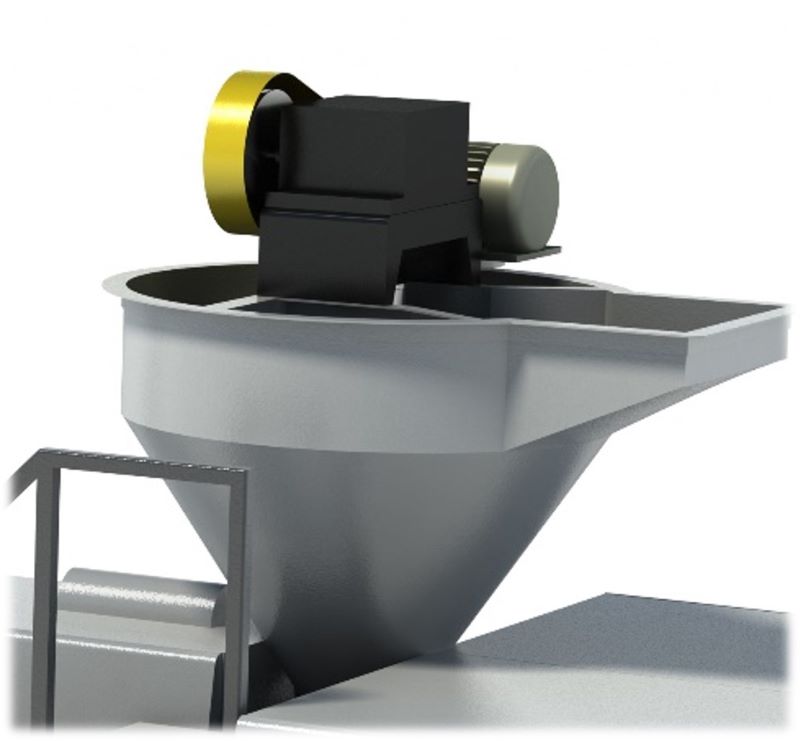
3. Side Feeding with Forced Compression
This advanced method is designed to maximize feeding volume and improve material flow, making it particularly suitable for washed and squeezed films, as well as crushed bulky waste.
Key Advantages:
-
Increased Feeding Volume: Ensures a stable feed into the extruder, keeping the screw fully loaded to maximize machine output.
-
Material Preheating: Features an integrated heating system to preheat materials during feeding, reducing the extrusion process workload.
Best For: Operations requiring stable feeding and high production efficiency, especially for films and bulkier waste materials.
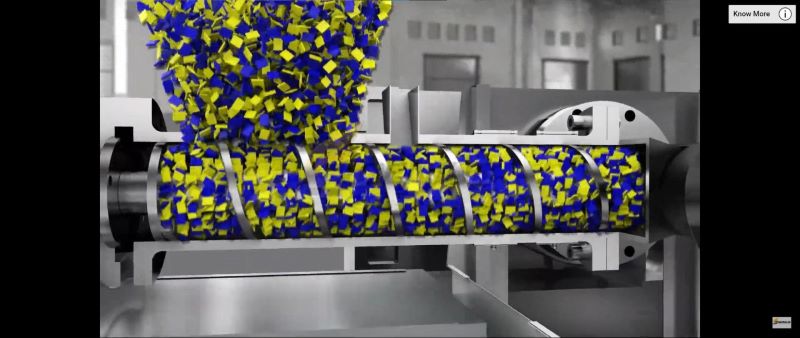
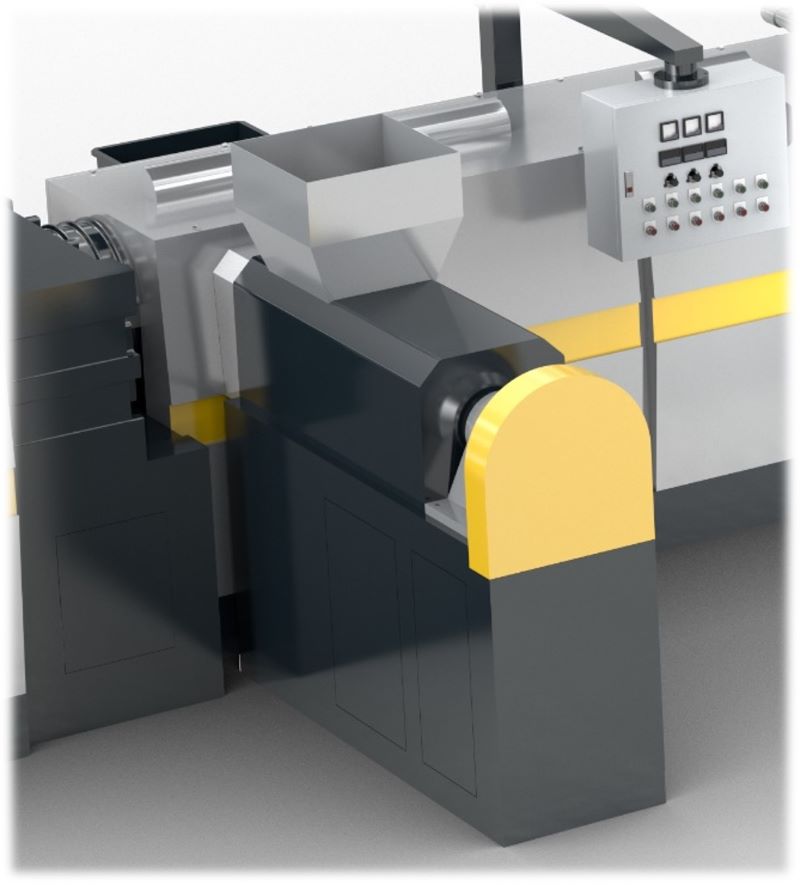
4. Shredder Feeding
For facilities managing diverse plastic waste types, shredder feeding is a versatile and effective solution. It breaks down large plastic waste pieces that are too big to feed directly into the recycling process.
Key Advantages:
-
All-Inclusive Solution: Highly compatible with all plastic waste types, shredding oversized materials into manageable sizes.
-
Streamlined Processing: Efficiently crushes and feeds large waste directly into the extruder, simplifying the recycling workflow.
Best For: Recycling operations handling a wide range of materials, offering flexibility and high compatibility across various waste types.
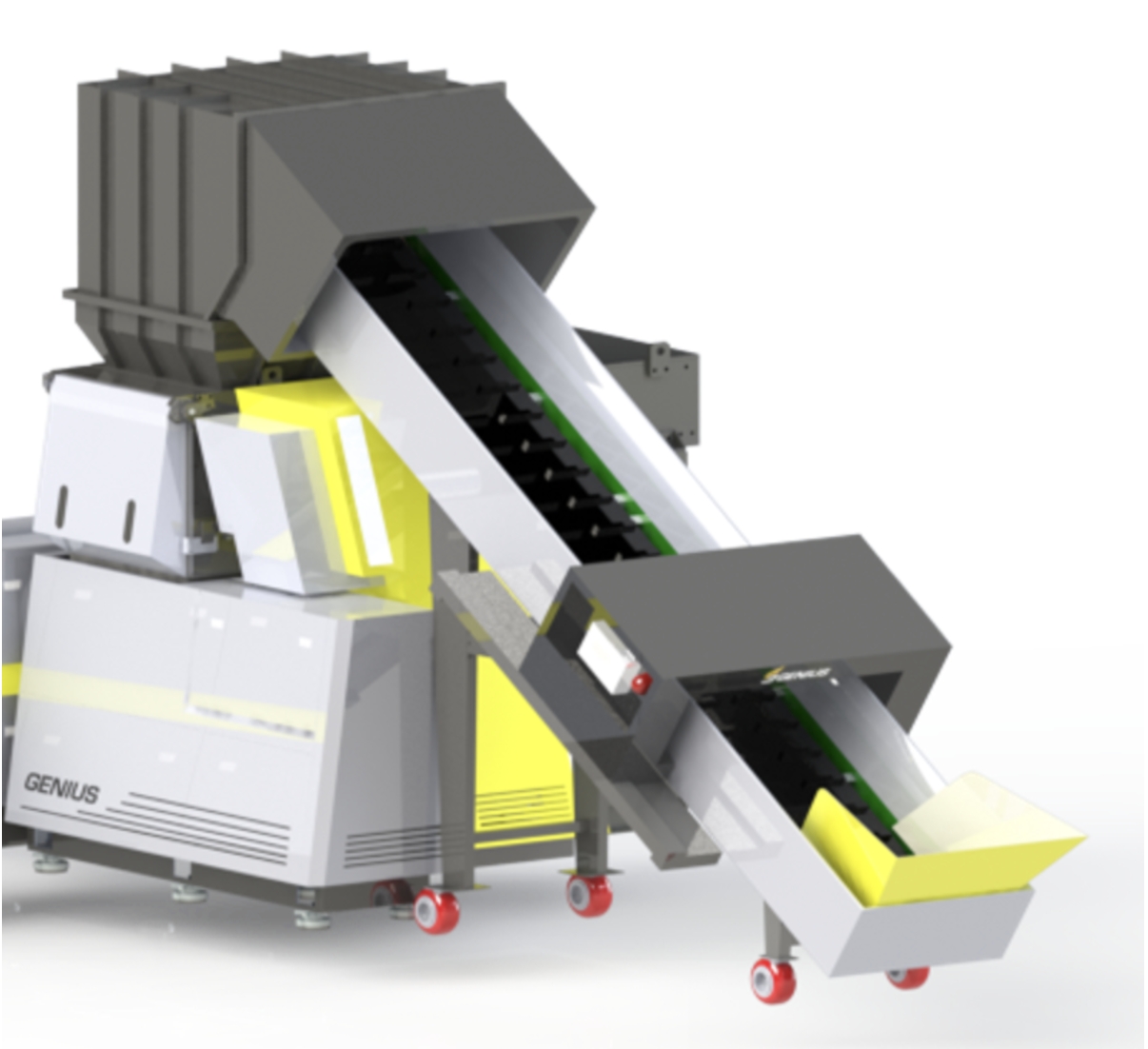
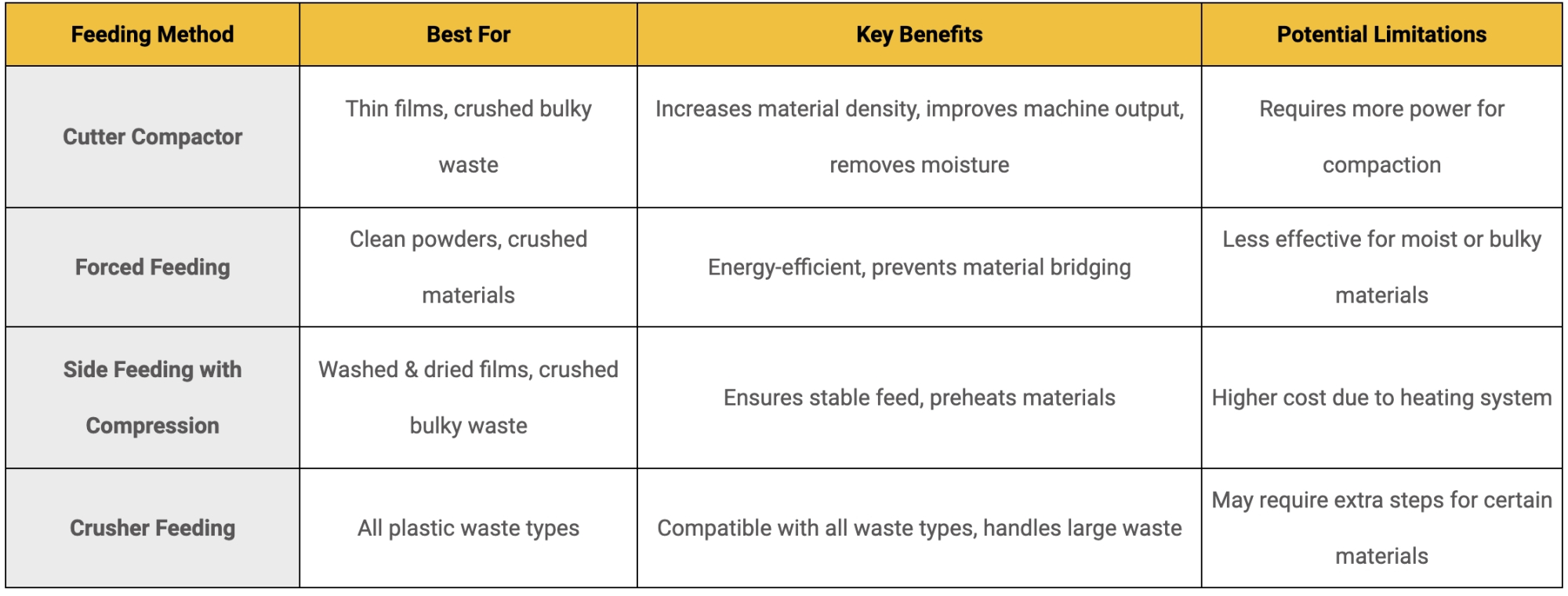
Maximizing Recycling Efficiency: Next Steps
Choosing the right feeding method is a critical step toward optimizing your recycling operations. Whether you opt for cutter compactors, forced feeding, side feeding with compression, or shredder feeding, the right choice can dramatically enhance your equipment's efficiency and output.
To further improve your recycling process, consider additional equipment such as Screw Press Dewatering Machines, which are indispensable for moisture removal and material preparation. Click here to learn more about Genius Screw Press Dewatering Machines.
For tailored advice on the best feeding methods and recycling equipment, contact us today. We’re ready to help you achieve peak performance for your recycling operations.
押出機および押出全体のプラント設備
- バブルマット製造装置
- 布押出バブル押出ライン
- 共押出バブル布の生産ライン
- 機器のバッグ
- フィルム吹いマシン
- フィルム吹いマシン
- フィルム吹いマシン
- キャストフィルム機
- コーティングマシン
- EPS / EPE発泡シート押出
- 押出機
- 積層機
- Extrusion Lines For Filaments and Yarn
- Extrusion Lines For Pipes and Profiles
- モノフィラメント押出機
- モノフィラメント押出機
- PET Strapping Band Extrusion Lines
- マシンを作ります
- プラスチックフィルムの共押出
- プラスチックパイプ製造機
- プラスチックパイプ製造機
- PVCホースマシン
- ストロー製造機
- 二軸スクリュー押出機
- 二軸スクリュー押出機
- バッグマシン



